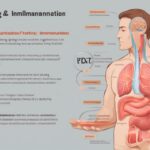Fasting, whether for spiritual, health, or personal reasons, can be a transformative experience. However, returning to regular eating after an extended break requires careful consideration to avoid digestive discomfort and ensure your body readjusts smoothly. This is where the concept of gentle nutrition after extended breaks comes into play. By prioritizing easily digestible foods, mindful eating practices, and a gradual reintroduction of nutrients, you can support your body’s recovery and maintain the benefits of your fast. In this post, we’ll explore practical strategies to ease back into eating with care and intention.
Why Gentle Nutrition Matters After Fasting
Extended fasting periods, whether intermittent fasting for several days or prolonged water fasts, put your digestive system into a state of rest. During this time, digestive enzyme production slows, and your stomach may shrink slightly. Jumping back into heavy or complex meals can overwhelm your system, leading to bloating, cramping, or even nausea. Gentle nutrition after extended breaks focuses on reawakening your digestive system with foods that are easy to process while providing essential nutrients to replenish your body. This approach helps prevent refeeding syndrome—a potentially dangerous condition caused by rapid refeeding after starvation—and supports long-term health.
Start with Hydration and Electrolytes
Before diving into solid foods, prioritize hydration. After an extended fast, your body may be dehydrated, and electrolyte imbalances can occur. Begin with small sips of water, herbal teas, or diluted coconut water to restore fluids. Adding a pinch of high-quality sea salt to your water can help replenish sodium levels, while potassium-rich options like banana-infused water (if you’re ready for light fruit) can support muscle and nerve function. Avoid sugary drinks or caffeinated beverages at first, as they can irritate an empty stomach. Hydration sets the foundation for gentle nutrition after extended breaks, ensuring your body is ready for the next steps.
Introduce Easily Digestible Foods First
When breaking a fast, start with small portions of simple, nutrient-dense foods that won’t strain your digestive system. Bone broth is an excellent choice, as it provides collagen, amino acids, and minerals in a form that’s easy to absorb. Other options include steamed vegetables like zucchini or carrots, mashed sweet potatoes, or a small serving of cooked white rice. These foods are low in fiber initially, which helps prevent digestive overload. Avoid raw vegetables, nuts, seeds, and heavy proteins right away, as they require more effort to break down. For more on nutrient-dense recovery foods, check out our post on Nutrient-Dense Foods for Fasting Recovery.
Gradually Reintroduce Complex Foods
After a day or two of light, easily digestible meals, you can slowly incorporate more complex foods into your diet. Start by adding small amounts of lean proteins like poached chicken or fish, and introduce healthy fats such as avocado or a drizzle of olive oil. Increase fiber intake gradually with cooked fruits like applesauce or pears before moving to raw options. Portion control is key—eat small, frequent meals rather than large ones to avoid overwhelming your stomach. Gentle nutrition after extended breaks means listening to your body’s cues; if you feel discomfort, scale back and give your system more time. Learn more about mindful eating in our guide to Mindful Eating After Fasting.
Avoid Common Post-Fast Pitfalls
One of the biggest mistakes people make when ending a fast is indulging in processed or high-fat foods too soon. Pizza, fried foods, or sugary desserts can shock your system, leading to digestive distress and negating some of the cleansing benefits of fasting. Additionally, overeating—even with healthy foods—can cause discomfort. Stick to whole, unprocessed options and chew thoroughly to aid digestion. Alcohol and caffeine should also be avoided initially, as they can dehydrate you and irritate your stomach lining. For tips on avoiding overeating, read our article on Portion Control Strategies Post-Fast.
Support Your Gut with Probiotics and Prebiotics
Fasting can alter your gut microbiome, and reintroducing food offers a chance to rebuild a healthy balance of gut bacteria. Include fermented foods like plain yogurt, kefir, or sauerkraut (in small amounts) to provide probiotics, which support digestion and immunity. Prebiotic foods such as bananas, garlic, and onions can nourish beneficial gut bacteria but should be added slowly to avoid bloating. Gentle nutrition after extended breaks isn’t just about what you eat—it’s also about fostering long-term gut health. If you’re new to probiotics, start with our beginner’s guide at Probiotics for Gut Health After Fasting.
Disclaimer: The information provided in this post is for general informational purposes only and should not be considered medical advice. Fasting and dietary changes can have different effects on individuals, and what works for one person may not work for another. Always consult with a healthcare professional or registered dietitian before making significant changes to your diet or fasting regimen, especially if you have underlying health conditions or are on medication. We are not responsible for any adverse effects resulting from the application of the suggestions in this article.
References
- Harvard Health Publishing – Intermittent Fasting: Surprising Update
- Mayo Clinic – Fasting: What You Need to Know
- National Institutes of Health – Effects of Fasting on Gut Microbiota
- WebMD – Fasting Diets: What to Know
- Cleveland Clinic – Understanding Refeeding Syndrome
This content is for informational purposes only and not a substitute for professional advice.






